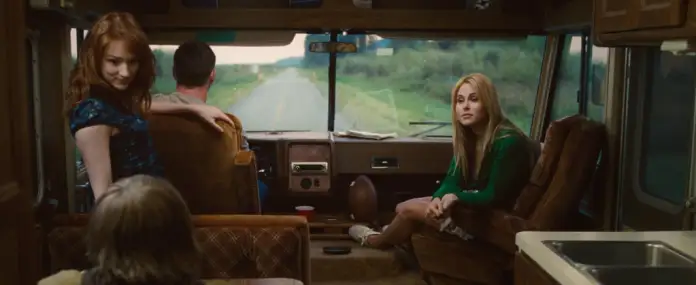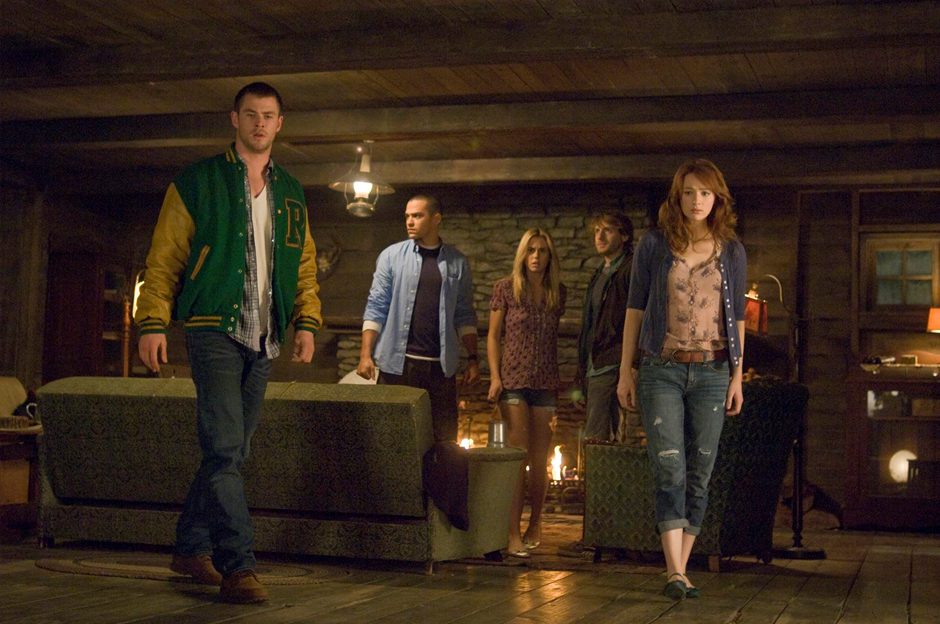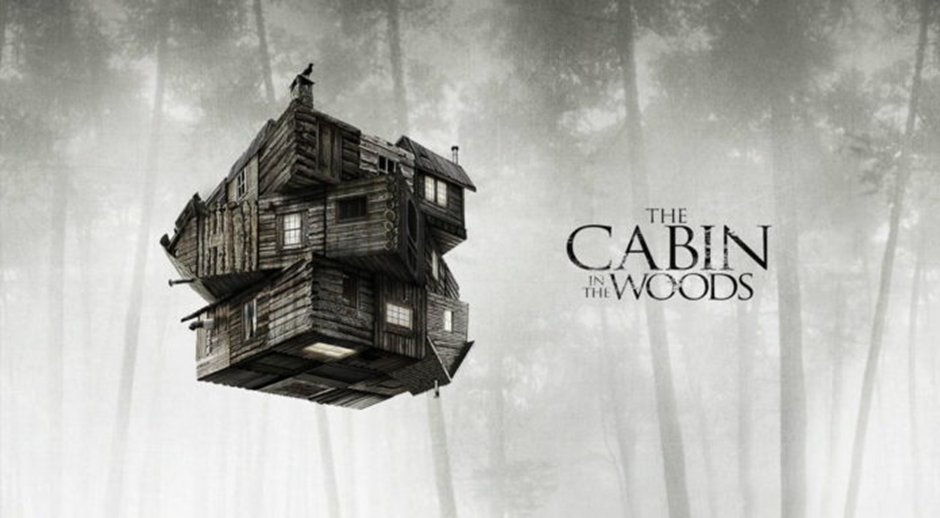By Ermioni Pavlidou,
Today marks ten years since the release of the horror-comedy in the United States named The Cabin in the Woods, which quickly became a successful film of a mixed genre, falling in the category of self-sarcasm and meta-horror, being appreciated by both non-horror and horror fans. It was directed by Drew Goddard, produced by Joss Whedon, and written by both Goddard and Whedon. It is a homage and simultaneous satirical critique of slasher films, the stereotypical writing of the characters in them, and sheds light on the issue of the actuality of free will in such movies.
There is a fine and ambiguous line between the successful handling of a film course that is deliberately combining the common tactics slasher and horror films use; and the utter laziness in the script covered with the easy defensive method of self-mockery. The Cabin in the Woods manages not to cross it. The Scary Movie franchise did it first, but it was based on a different premise with a less serious projection of itself.
From the ominous and full-of-foreshadowing encounter with the creepy gas-station owner — that was probably a reference to The Texas Chain Saw Massacre (1974), or Friday the 13th film series and, let us be honest, every road-trip themed horror movie — to the five completely different and portable stereotypes of characters that ignore every patent warning to the absolutely secluded and eerily decorated cabin; this horror film has — literally — everything in-store, or better phrased: “in lab”.

Five college students set out for a weekend in a cabin located in the woods, property of one’s ambiguous cousin, which hides a horrifying surprise underneath. The cabin is controlled by two scientists (Richard Jenkins and Bradley Whitford) in an underground lab that resembles the headquarters of a higher deity, ready to give the five protagonists a series of choices that will lead to their inevitable death by the creature they will eventually summon to slaughter them. Limited choice for survival, yet limitless choices of death. This could also — if combined with the ending — be a reference to the movie The Truman Show (1998). The colleagues in the lab place bets on which of the monsters will be responsible for the deaths of the five students, whether it will be zombies, dolls, werewolves, or clowns.
So, let us meet the five college kids who cluelessly participate in a journey that will be their end. Each one of them is the stereotypical representation of every character used in slasher movies, in full connection with their deaths. There is the impulsive jock with the appropriate name, Curt (Chris Hemsworth), who dies riding his motorcycle through the cliff, crashing into an invisible electric field, in a full of adrenaline and despair moment. Next is the more impressive and shallower girl, Jules (Anna Hutchison), who is involved in a sex scene that leads to her death, like a sexist punishment for being sexually active. Holden (Jesse Williams), who is sensible and perceptive, almost escapes a predestined fate but drowns in a lake.
The good, sentimental, and smarter girl that is a virgin — in direct connection with sacrificing rituals — survives until the utter and out of control destruction, Dana (Kristen Connolly), and her last moments on earth companion, Marty the pothead (Fran Kranz), used as the comic relief who has a development of being both skilled and lucky. The two share their last moments on earth counting down the seconds having no choice after triggering the universal doom.

Looking at the movie in general, it is a very entertaining attempt at highlighting the plot weaknesses and clichés used in almost every horror film. It is also an indulging critique on the lack of choice, characters in horror films are entangled, as the premise itself and all the signs point to their gruesome deaths by an initially slow-burn beginning and a fast-paced and usually partly riddling ending. The characters’ journey is trapped like they are in the cabin. The choices they make do not matter as the scientists sitting at the lab closely watching their every move, refer very apparently to the writers of horror movie scripts, that have many alternatives in order to trigger and secure the characters’ deaths.
References
- “The Cabin in the Woods – review”, theguardian.com, Available here
- “Another ominous gas station owner”, rogerebert.com, Available here




